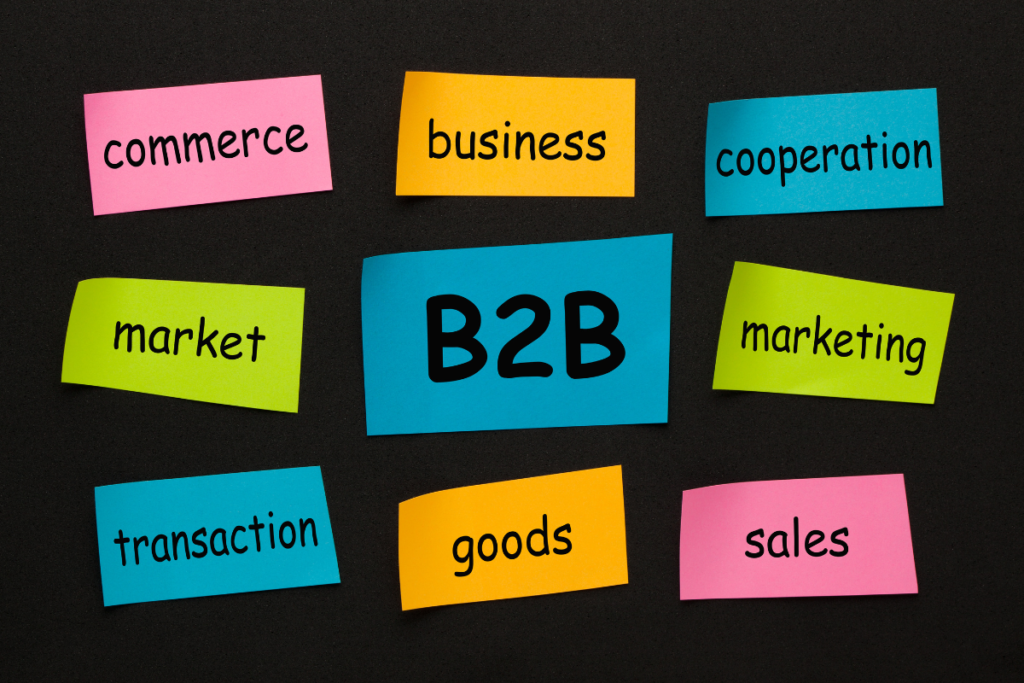
Introduction
Email marketing plays a crucial role in the B2B (business-to-business) sector, helping companies turn leads into sales and drive business growth. Lead generation, understanding the buyer’s journey, creating effective email campaigns, nurturing leads, and tracking performance are all key components of successful B2B email marketing strategies.
In B2B marketing, lead generation is of utmost importance. Finding new clients and attracting their interest in your goods or services are the steps involved. Through targeted email campaigns, companies can attract leads and guide them through the buyer’s journey.
The Importance of Lead Generation in B2B Marketing
Lead generation is crucial in B2B marketing for several reasons. It plays a vital role in identifying potential customers, raising brand awareness and driving sales growth. By generating leads of high quality, companies can enhance the effectiveness of their marketing efforts and improve their prospects of converting potential customers into loyal ones Example. Upskillrocket.in
Understanding the Buyer's Journey in B2B Email Marketing
1. Awareness Stage
The awareness stage in B2B email marketing is important for capturing the attention of potential leads. To effectively engage your audience at this stage, consider the following suggestions:
– Craft informative and compelling subject lines to generate interest.
– Provide valuable content that addresses pain points and educates prospects.
– Include clear and prominent call-to-actions to encourage further engagement.
– Personalize your emails to establish a connection with the recipient.
By implementing these strategies, you can lay a strong foundation for the buyer’s journey and increase the likelihood of converting leads into sales.
2. Consideration Stage
- During the Consideration Stage of B2B email marketing, potential buyers evaluate various solutions and narrow down their choices. To effectively engage them, consider the following strategies:
- Give full information on the attributes and advantages of your good or service.
- Create comparison charts or case studies to highlight the advantages of choosing your offering.
- Offer a free trial or demo to allow prospects to experience your solution firsthand.
- Include testimonials or customer reviews to establish trust and credibility.
- Personalize your emails based on the prospect’s specific needs and challenges.
By implementing these tactics, you can guide potential buyers towards making informed decisions and increase the likelihood of converting leads into sales.
3. Decision Stage
The decision stage is the final stage of the buyer’s journey in B2B email marketing. In this stage, the prospect has identified their problem and is evaluating different solutions. During this stage, it is important to provide the prospect with compelling reasons to choose your product or service.
Highlight the unique features and benefits that set your offering apart from competitors. Offer case studies, testimonials and product demos to showcase the value and effectiveness of your solution. Provide pricing information and address any concerns or objections the prospect may have.
In order to maximise conversions in the decision stage, it is essential to create a sense of urgency and instil confidence in your prospect. Offer limited-time discounts or incentives to motivate them to take action. Provide clear and easy steps for them to make a purchase or request a consultation.
Creating Effective B2B Email Campaigns
1. Building a Targeted Email List
Building a targeted email list is essential for the success of your B2B email marketing campaign.
Here are the steps to create an effective email list:
- Identify your target audience based on industry, job titles or demographics.
- Collect email addresses through website sign-ups, social media, or in-person events.
- Segment your email list based on characteristics like location, company size, or interests.
- Use lead generation tactics such as offering valuable content or incentives to encourage sign-ups.
- Make sure to regularly update and clean your email list to get rid of bounced or inactive addresses.
2. Crafting Compelling Email Subject Lines
- Craft email subject lines that are short and to the point.
- Use words like “limited time offer” or “don’t miss out” to encourage recipients to open your emails.
- Include the recipient’s name or any other relevant information to make the subject line more engaging.
- Pose a question that piques the recipient’s curiosity and entices them to open the email.
- Incorporate strong and compelling words like “free,” “exclusive,” or “new” to grab attention and create interest.
Remember, the subject line is the first impression of your email. Make it compelling and intriguing to increase open rates and drive engagement. Happy crafting!
3. Personalizing Email Content
- Personalisation is crucial in B2B email marketing to engage recipients and boost open and click-through rates.
- Customise emails based on the recipient’s industry, job title, past interactions, and preferences.
- Utilise dynamic content to personalise the email body, subject lines, and calls to action.
- Include the recipient’s name, company name, and relevant content to make the emails more relevant and impactful.
- Segment your email list and create targeted campaigns to deliver personalised content to specific groups.
To enhance personalisation, analyse data and feedback to comprehend the recipients’ needs and preferences. Regularly test various personalisation tactics and monitor performance metrics such as open rates and conversions.
Nurturing Leads with B2B Email Marketing
1. Segmenting Your Email List
Segmenting your email list is essential for effective B2B email marketing. To successfully segment your list, follow these steps:
- Assess your customer database to identify common characteristics or behaviours.
- Create segments based on criteria such as industry, company size, or previous interactions.
- Create personalised content that caters to the needs and interests of each segment.
- Utilise email automation tools to send targeted messages to each segment.
- Make sure your segments are still relevant by giving them a regular evaluation and update.
2. Sending Automated Drip Campaigns
- Select the people on your email list according to pertinent parameters, including industry, position, or past exchanges.
- Make a sequence of emails that are sent automatically when particular events or periods pass.
- Provide valuable and relevant content in each email to keep leads engaged and interested.
- Incorporate personalised elements, such as using the lead’s name and addressing their specific pain points.
- Include clear and compelling call-to-actions (CTAs) to encourage leads to take the desired next step.
Tracking and Analyzing B2B Email Marketing Performance
1. Monitoring Open and Click Rates
Monitoring open and click rates is essential for evaluating the effectiveness of your B2B email marketing campaigns.
- Monitor open rates to determine how many recipients have opened your emails.
- Monitor click rates to measure the level of engagement from your audience.
- Analyze the data to identify trends and make informed decisions to improve your email performance.
According to a study, the average email open rate across industries is approximately 20%, while the average click-through rate is around 3%.
2. Tracking Conversion Rates and Sales
- To measure website conversions, set up conversion tracking tools such as Google Analytics.
- To track conversion rates and sales, define key performance indicators (KPIs) including conversion rate, revenue per email and customer lifetime value.
- Analyze data and identify patterns or trends in conversion rates and sales to assess the effectiveness of your email marketing campaigns.
- Tailor your messaging and offers to different customer segments by segmenting your email list based on conversion rates and sales.
- Improve overall performance by optimizing your email campaigns based on insights gained from tracking conversion rates and sales and making necessary adjustments.
Frequently Asked Questions
B2B email marketing can turn leads into sales by effectively nurturing and engaging qualified leads. By personalizing and customizing email communications, understanding prospects' needs and interests and creating strategic messaging.
By buying an email list for lead generation and using client testimonials, businesses can also establish credibility and build trust with their target audience.
Personalization is important in B2B email marketing because it helps businesses connect with their prospects on a deeper level.
Businesses can stand out in a competitive B2B email marketing landscape by offering unique and valuable content, using conversational tones instead of technical-sounding words and creating a creative approach.
Businesses should measure metrics such as open rates, click-through rates, conversion rates, and return on investments (ROI) to improve their B2B email marketing performance.
